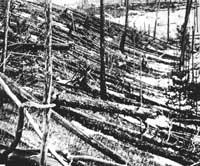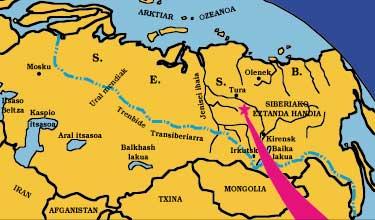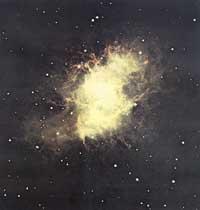The cosmic object of Tunguska, XX. The mystery of the twentieth century
2002/06/01 Orobengoa, Olatz - Elhuyar Zientziaren Komunikazioa Iturria: Elhuyar aldizkaria
Near the Tunguska River, in the central taiga of Siberia, no one knew what happened that day until much later. Something that caused a terrible catastrophe from the sky fell, and the only ones who saw directly what happened were some snow deer and the men who looked after them.
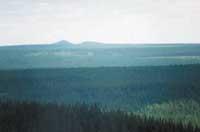
The cosmic object of Tunguska, so called by scientists, is one of the most surprising events of the last century. It had terrible consequences in the area, but until 19 years later the Russian government sent no one to analyze what happened.
The people of these areas said that the god of lightning sent them the curse and that place was enchanted. No one dared to approach. However, in April 1927 Leonid A. The scientist named Kulik, with the aim of knowing the facts, was released to know the surroundings of the Tunguska River. With the collected and heard in it, he deduced that the fallen object of heaven was a meteorite. But, despite having made numerous holes in the ground and studying thousands of trees, he found no part of the object anywhere. In 1929 and 1938 he made two other expeditions around the explosion, but never found crater or remains of the object. In 1942, Kuli died during World War II in a Nazi concentration camp.
Thanks to the data and testimonies collected by Kulike, the scientific community learned about the success of Siberia and since then numerous investigations have been conducted to find out what happened there.
Consequences of the explosive explosion
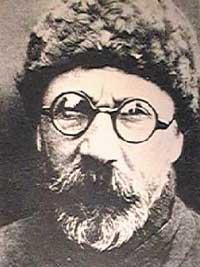
The epicenter of the explosion is located near the Tunguska River, at coordinates at 101 ºE and 62 ºN. Immediately after the explosion of the object, earthquakes occurred in the Center of Meteorology and Magnetism of Irkutsk, 900 km from the epicenter, an earthquake of magnitude 5 on the Richter scale. The explosion was heard at 500 km and at 170 km an object similar to a fireball was observed falling from the sky to the ground. The windows of the houses located 60 km were broken and the force of the explosion threw people to the air located 30 km.
The object exploded in the sky, about 8 km from the ground. And he released 10 23 erg of force, 40 megatones of TNT, 2,000 times stronger than the atomic bomb dropped in Hiroshima. As the object was completely dissolved in the air it did not leave craters on the ground.
A comet or a black hole?
With all these surprising data, scientists have published numerous theories on the nature of the object. Some have claimed it could be a comet or meteorite, while others have said it could be an antimatic rock or a tiny black hole lost in space.
Those who proposed the hypothesis of Antimatería affirmed that the explosion of a rock of this type would have a similar influence to that of Tunisia. However, with the passage of the years, the hypothesis has been losing strength because there is no clear evidence. The same happened with the black hole hypothesis.
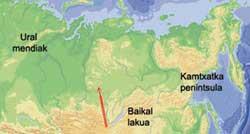
Currently, researchers from the University of Bologna and the University of Moscow are investigating the event and organizing the expedition to Tunisia almost every year. Two are the answers to the mystery of Tunguska: with the doubt that the object was a comet or meteorite, several scientific articles have been published confirming both hypotheses.
According to the promoters of comet theory, the explosion of a meteorite in the atmosphere is very difficult, while comets are made of not very dense materials, so it is possible to explode in the atmosphere. In addition, in the nights following the explosion in Europe there was an unusual luminosity. At 1:45 p.m. they wrote in an English newspaper that it was possible to read a book without light. They say that luminosity occurred by effect of cosmic dust, which was a consequence of the comet explosion.
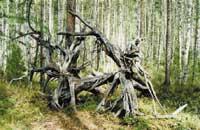
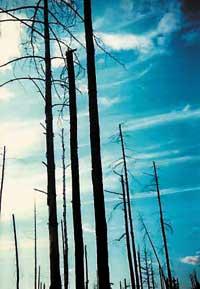
Those who promote meteorite theory also have arguments in their favor. They say that the meteorite that enters the atmosphere at a speed of between 12 and 20 km/s suffers a strong mechanical shock. This shock can become enough to exploit stones of a specific size. The object of Tunguska had a diameter of 50-60 m, for which a suitable explosion size was considered.
The scientific article, published a year ago by the Bologna team, confirmed that the object was meteorite. For this purpose, 1.160 possible orbits of the object were analyzed. In addition, analyzing soil samples collected for years around the epicenter, higher concentrations of nitrogen, iridium and carbon than normal were detected.
The Italians, discussing the composition of the meteorite, commented that some meteorites have orbits similar to comets and that there are also little dense materials. As an example, the 1979 VA body was cited: Also known as comet P/Wilson-Harrington and asteroid Wilson-Harrington (4015).

Gai honi buruzko eduki gehiago
Elhuyarrek garatutako teknologia




